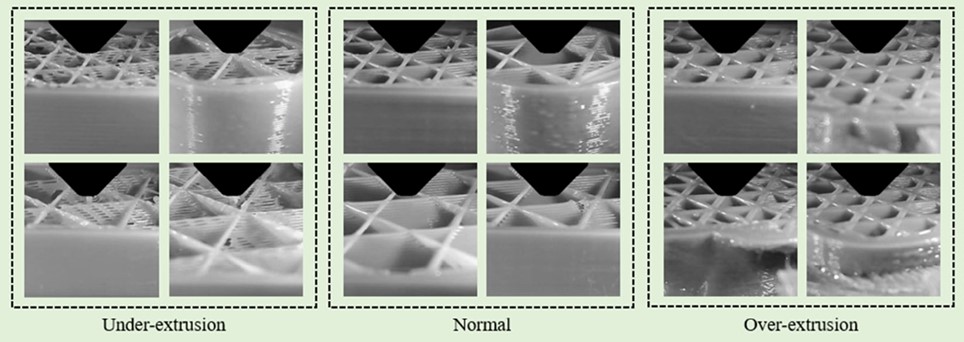Researchers use machine learning to optimize 3D printing. This allows them to reduce waste and improve structure.
3D printing technology is quickly expanding to more industries including medicine, food, and aerospace technologies. It makes manufacturing quicker, cheaper, and much more reliable.
This production method can lead to a shortage of material or an excess after printing. The printed object could be too fragile if not enough material is used. A high flow rate of material can cause imperfections in printed samples and cost you more money.
Woo Soo, Kim from Simon Fraser University, British Columbia, Canada, led a research team that addressed this issue to make 3D printers more efficient. in situ Control and correction for material consumption
Fused deposition modeling is a 3D printing method that prints layers of samples, melting the material into filaments and then printing the object in a predetermined way. The flow rate of the material from a special nozzle determines the quality. There may be a different optimal rate at different stages. In these cases, it can lead to the above problems.
To automatically control and regulate the material flow rate when printing individual components — which in the present study was a plastic dog bone — the researchers turned to machine learning. Data analysis is used to control the manufacturing process. This allows them to analyze input data and identify patterns. They can also make predictions.
The 3D printer’s camera captured the printing process and sent the data to the computer. The machine learning algorithm, which was trained to detect if the right amount of material was being extruded at any given time by the appearance of the part, was able correct the process in actual time if it was not.
This works great on paper but scientists had to experiment with the algorithm. The team printed samples at different flow rates to test the effectiveness of their algorithm. They found that the material flow rate reached the optimal level by the end of printing for extrusion rates as low as 60%, 80%, 100% and 120% of the optimal.

The printed sample’s parameters were also impressive. It was up to 20% stronger than printing without the control algorithm. In many cases, this could prove to be vital. Additionally, it saved as much as 40% on material.
Scientists believe that there is still room for improvement despite all the positive progress.
They believe their method is compatible with fused deposition modeling as well as other 3D printing methods. You can control the material flow rate in real time. This is also possible for other parameters such as the temperature. The printing pattern can be improved by increasing its size and ensuring that quality checks are performed more often.
Like all applied science predictions, further research and their implementation in industry will confirm or disprove these claims.
Reference: WooSoo Kim et.al., Adaptive 3D Printer for In Situ Adjustment Mechanical Properties, Advanced Intelligent Systems (2022). DOI:10.1002/aisy.202200229
Minku Kang, Unsplash image credit